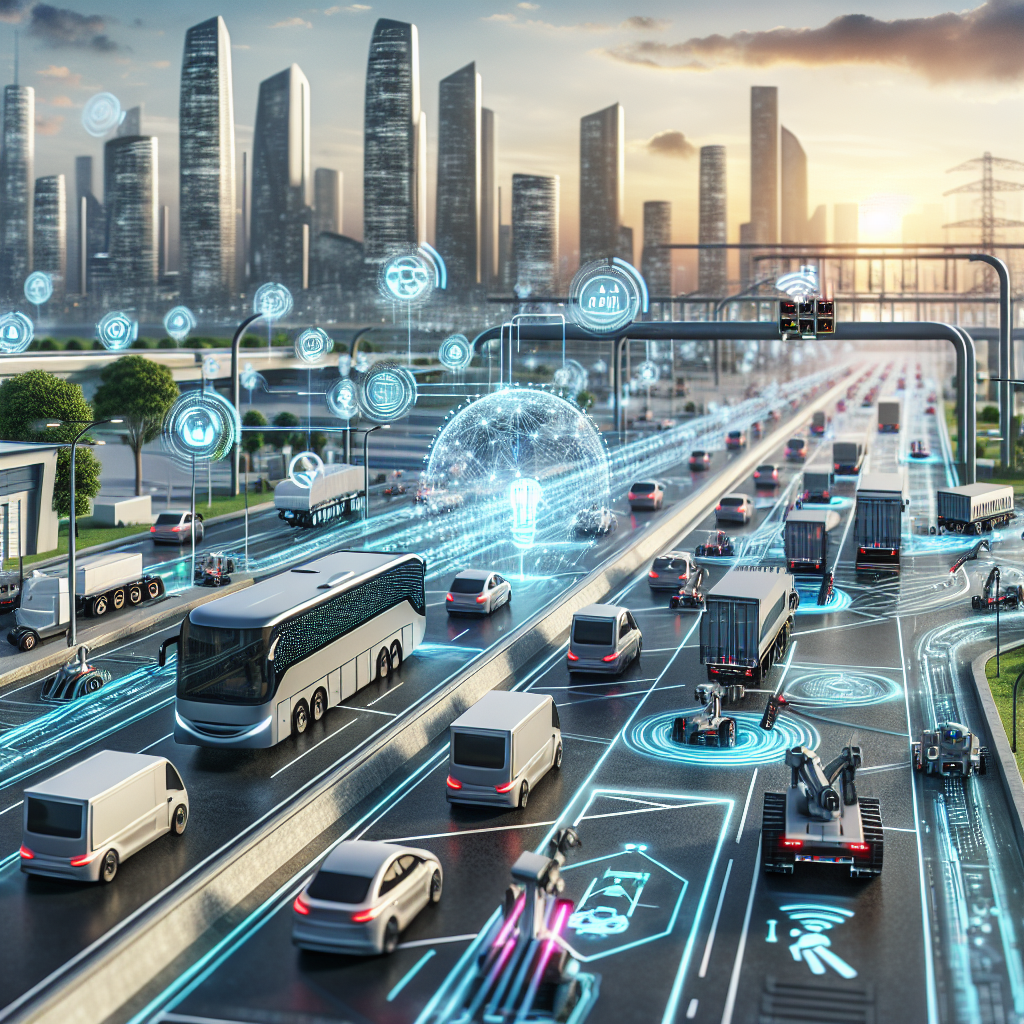Transportation is a key aspect of our daily lives, enabling us to move goods, people, and services from one place to another. With the rise of technology, there are now new ways to enhance transportation efficiency through the use of AI-driven automation and robotics. These technologies have the potential to revolutionize the way we think about transportation, making it faster, safer, and more sustainable.
AI-driven automation and robotics are already being used in various industries, including manufacturing, healthcare, and retail. In transportation, these technologies can be used to streamline processes, reduce costs, and improve overall efficiency. From autonomous vehicles to smart traffic management systems, AI-driven automation and robotics have the potential to transform the way we move around our cities and beyond.
One of the key benefits of AI-driven automation and robotics in transportation is the potential to reduce human error. Human error is a leading cause of accidents and delays in transportation, costing billions of dollars each year. By using AI-driven automation and robotics, we can minimize the risk of accidents and improve safety on our roads, railways, and in the air.
Another benefit of AI-driven automation and robotics in transportation is the potential to increase efficiency. These technologies can help optimize routes, reduce congestion, and improve the overall flow of traffic. By using AI to analyze data in real-time, transportation systems can adapt to changing conditions and make better decisions to keep things moving smoothly.
Furthermore, AI-driven automation and robotics can also help reduce costs in transportation. By automating tasks that are currently done manually, such as scheduling, maintenance, and monitoring, companies can save time and money. This can lead to lower operating costs, increased productivity, and improved profitability.
In terms of sustainability, AI-driven automation and robotics can also play a key role in reducing the environmental impact of transportation. By optimizing routes, minimizing fuel consumption, and reducing emissions, these technologies can help create a more eco-friendly transportation system. This is particularly important as we strive to reduce our carbon footprint and combat climate change.
Overall, AI-driven automation and robotics have the potential to revolutionize transportation, making it faster, safer, and more sustainable. By harnessing the power of these technologies, we can create a more efficient and effective transportation system for the future.
FAQs:
Q: How does AI-driven automation and robotics improve transportation safety?
A: AI-driven automation and robotics can help improve transportation safety by reducing human error, optimizing routes, and monitoring traffic in real-time. By using AI to analyze data and make decisions, transportation systems can adapt to changing conditions and make better choices to keep people safe on the roads, railways, and in the air.
Q: How can AI-driven automation and robotics reduce costs in transportation?
A: AI-driven automation and robotics can help reduce costs in transportation by automating tasks that are currently done manually, such as scheduling, maintenance, and monitoring. This can lead to lower operating costs, increased productivity, and improved profitability for companies in the transportation industry.
Q: What are some examples of AI-driven automation and robotics in transportation?
A: Some examples of AI-driven automation and robotics in transportation include autonomous vehicles, smart traffic management systems, and drones for delivery services. These technologies are already being used in various industries to streamline processes, reduce costs, and improve efficiency.
Q: How can AI-driven automation and robotics help reduce the environmental impact of transportation?
A: AI-driven automation and robotics can help reduce the environmental impact of transportation by optimizing routes, minimizing fuel consumption, and reducing emissions. By using AI to make better decisions in real-time, transportation systems can create a more eco-friendly and sustainable way to move people and goods from one place to another.

